Rolling Tobacco Bag: An Industry Guide for International Buyers and OEM Customers
Rolling tobacco bags have long served as essential accessories for smokers who prefer hand-rolled cigarettes. Beyond their functional value, these bags are now evolving in response to shifting consumer preferences—becoming symbols of style, sustainability, and personal expression. For international buyers, distributors, and OEM customers, understanding the nuances of this product category can unlock profitable business opportunities in both traditional and emerging markets.
This guide explores the current landscape of rolling tobacco bags, delving into market dynamics, production methodologies, supplier differentiation, and practical steps for sourcing high-quality products.
Market Outlook and Emerging Trends
The rolling tobacco bag segment is closely linked to broader changes in the smoking industry. As more consumers turn to loose-leaf tobacco over pre-packaged cigarettes, demand for well-designed, functional, and sustainable storage solutions has risen accordingly.
Key developments shaping the market include:
-
Eco-conscious design: Sustainability is a top priority. Brands are increasingly offering bags made from biodegradable, recycled, or eco-certified materials to align with green values.
-
Customization for white-label brands: OEM clients are seeking more flexibility—bags that can be fully branded, color-customized, and tailored in form and function to reflect their target audience.
-
Smart portability: Features like moisture-lock linings, zippered compartments, and odor-resistant materials are now expected in mid- to high-end product lines.
As competition grows, the visual and tactile experience of a rolling tobacco bag has become as important as its basic utility. For businesses looking to differentiate, investing in both form and function is essential.
Manufacturing Process: From Material to Market
Understanding how rolling tobacco bags are made gives buyers the tools to evaluate supplier competence and product quality. The process includes four key stages:
1. Material Sourcing
Manufacturers typically offer a range of options:
-
Leather – prized for durability and aesthetic appeal, ideal for premium products.
-
Canvas – popular among environmentally aware consumers for its organic feel and rugged texture.
-
Synthetic fabrics – such as PU or polyester, cost-effective and available in a variety of finishes.
Your supplier’s ability to source high-quality, responsibly manufactured materials plays a direct role in customer satisfaction and brand perception.
2. Design and Sampling
OEM clients often begin with a design brief. Whether minimalist or luxury-inspired, the prototype phase includes decisions around:
-
Brand colors and logos
-
Compartments for rolling papers or lighters
-
Closure mechanisms (e.g., zippers, snaps, magnetic clasps)
A responsive manufacturer will offer clear communication during sampling to ensure alignment with your brand vision.
3. Assembly and Production
While automated stitching and cutting machines offer consistency at scale, some suppliers maintain hand-finishing stations to meet demand for artisanal or small-batch runs. Modern manufacturers may also incorporate:
-
Heat-sealing for odor control
-
Water-resistant linings
-
RFID-blocking pockets for multi-use cases
4. Quality Control
From measuring stitching accuracy to ensuring moisture protection and seam durability, top-tier producers follow strict QA protocols. This is particularly relevant for OEM clients who require consistent quality across multiple batches or product lines.
For an example of high-standards production processes, explore SnuffFactory’s manufacturing capabilities.
What Differentiates One Supplier from Another?
Geographic expertise and infrastructure matter. For instance:
-
European manufacturers, particularly from countries like Germany or Italy, are known for detailed craftsmanship and top-tier materials.
-
Asian factories offer scalable production, shorter lead times, and often lower costs, without sacrificing core quality.
-
Boutique suppliers specializing in hand-crafted or eco-responsible goods are gaining traction among lifestyle-focused brands.
Technology also plays a major role. Suppliers that invest in modern equipment—like digital fabric cutters or semi-automated stitchers—tend to offer more consistent finishes and better quality control. Customization capabilities, particularly for OEM buyers, often hinge on how agile the production line is.
Some advanced producers now integrate white-label capabilities across a broad portfolio that includes rolling bags, nicotine pouches, and related accessories. If you’re exploring entry into multiple product verticals, consolidating manufacturing under one umbrella (like SnuffFactory’s white-label solutions) may streamline your supply chain.
Key Considerations for Choosing a Rolling Tobacco Bag Supplier
Finding the right supplier is more than just a cost negotiation. Here are practical factors to weigh:
-
Track record in the smoking accessories industry: Choose partners with proven experience serving B2B clients—ideally those familiar with compliance, material safety, and user expectations.
-
Branding and private-label capabilities: Look for flexible manufacturers who can accommodate full branding—from logo stamping to custom color runs and unique packaging.
-
Certifications and quality assurance: Ensure your supplier adheres to international safety and sustainability standards (REACH, ISO, etc.), especially if targeting markets with strict regulations.
-
Production scalability and delivery logistics: Confirm whether your supplier can handle both small test orders and large retail deployments, with reliable fulfillment timelines.
-
Support and responsiveness: Clear communication, sample testing, and transparent problem-solving are essential for long-term collaboration.
For custom rolling tobacco bag solutions tailored to OEM needs, reach out directly to SnuffFactory’s team.
Actionable Recommendations for Buyers
To succeed in the rolling tobacco bag market:
-
Align product offerings with consumer values, including sustainability, functionality, and style.
-
Start with low-risk sampling or pilot orders to evaluate supplier reliability and product-market fit.
-
Leverage white-label manufacturing to reduce time-to-market while maintaining control over branding.
-
Focus on packaging innovation as a key differentiator in crowded categories.
-
Work with multi-capability suppliers that can grow with your business across related product verticals.
Rolling tobacco bags aren’t just accessories—they’re an extension of a smoker’s lifestyle. For businesses, they represent a profitable and brandable product category with global reach. With the right supplier and strategy in place, international buyers and OEM partners can build meaningful differentiation and long-term customer loyalty.
To explore trusted production options, visit SnuffFactory’s full product catalog or connect with their team for tailored advice.



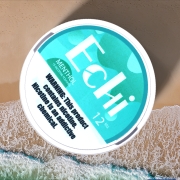
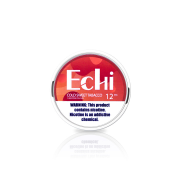
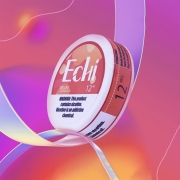

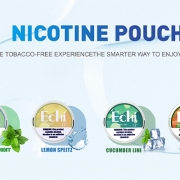
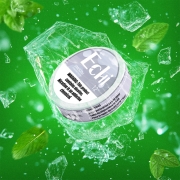
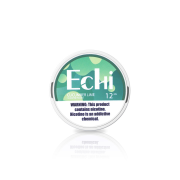


Leave a Reply
Want to join the discussion?Feel free to contribute!